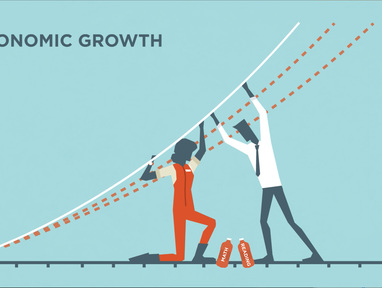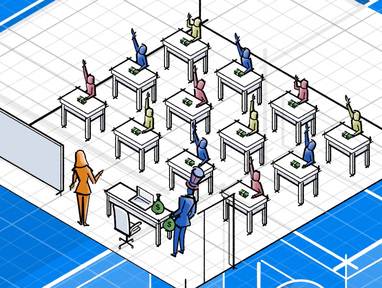Education
How Does Education Policy Currently Work In The United States?
Education policy is complicated in the United States because of our federalist system.
The federal government’s role in education is more advisory than operational. It provides a lot of guidance on the standards and goals for students, but allows states and local governments the flexibility to achieve them with varying methods. The federal government is in a position to know what we need in order to be competitive internationally. It can also be valuable in compensating students who need extra help. For example, it funds compensatory payments to schools for extra programs in order to help disadvantaged students or those in special education.
In the end though, state governments are charged with funding and running the schools. They are responsible for evaluating student outcomes and setting curricula. Education policy is one of most state-centric policies of national importance.
Ultimately, the future of the United States economy depends on increasing educational attainment, which requires a renewed emphasis on producing, rewarding, and retaining great teachers.
To learn more, watch “Education and the Nation’s Future” below, or read the Blueprint for America chapter it was based on here.
State and local control of school systems are sensible because populations vary widely across the country. Districts know the capacity of the schools and the demands that they face. They can best determine what kinds of programs fit the needs of their students and how best to achieve those.
For answers to more questions on the role of the government in education, watch “Office Hours” with Eric Hanushek:
How Much Of An Economic Effect Does Education Have On The Economy?
A country’s economic growth is dependent on the skills of its workers, and it turns out that math and reading proficiency are good predictors of the skills that lead to growth. A country’s growth rates are closely related to the skills of its population. And the skills of the population can be pretty well measured by how well people do on international math and science tests.
There is much more to education than competence in math and reading, but it is difficult to imagine high levels of scientific and historical knowledge, artistic production, or cultural awareness if students are not proficient in the tools that open the door to these domains of learning.
We often give special attention to mathematics, because it is especially easy to compare student achievement throughout the world. Compared to other skills learned in high school, math skills are best at predicting future earnings and other economic outcomes.
Eric Hanushek discusses this point further with Russ Roberts on EconTalk:
Hanushek on Education and Prosperity - Econlib
The acquisition of basic skills in reading and especially in mathematics in elementary and secondary school enhances a student’s long-term economic prospects. Countries that educate students to higher levels of achievement enjoys higher levels of economic productivity and more rapid rates of economic growth.
Over thirty countries in the industrialized world are ahead of the United States in providing an educational setting where students reach either proficiency or advanced understanding in math.
To learn more about long-run economic effects of education, watch “The Power of Education: Boosting Economic Growth in the Long Run” below:
How Much Of An Effect Do Teachers Have On The Educational Outcomes Of Students?
Regardless of class size, facilities, standards, and curricula, no factor makes a greater difference to education outcomes than high-quality teachers. Education policy should place a much higher priority on producing, rewarding, and retaining good teachers.
Hoover Institution senior fellow Eric Hanushek’s research suggests that having a great teacher for one year versus an average one can raise a student’s total lifetime earnings by $14,000.
Here’s another way to interpret that finding: Suppose an individual is on track to make $500,000 over his or her entire lifetime. Replacing an average teacher of theirs with a great teacher for one year is associated with new total lifetime earnings of $514,000.
To learn more, watch “Investing in Good Teachers Pays Big Dividends” here:
The video above suggests that a great teacher can generate a quarter of a million dollars a year in future lifetime earnings. That’s because a classroom of eighteen students each receiving an expected increase of $14,000 in lifetime earnings totals $252,000.
If all states improved their schools to match the educational outcomes of the top state (Minnesota), the overall gains would be $76 trillion over an eighty-year period. If each state lifted its student performance to that of the highest-performing state in its region, the economic gains would be $36 trillion over the same time period. All in all, America can reap enormous economic gain from improving its schools.
For more, you can read Hanushek’s article “The Economic Value of Higher Teacher Quality.”
How Should Public Education Policy Be Reformed?
While there are a lot of factors that contribute to the less-than-optimal education attainment in the United States, the overriding cause is that public education operates as a monopolistic system. School districts in each locality act as the single provider of public education. While some families are able to opt-out of the monopoly by choosing where to live or paying for private schools, a growing number of families are captive.
Because monopolies don’t have competition, they don’t need to innovate and innovation is the only way to discover and improve the educational outcomes of students.
Even so, within the monopolistic system, Macke Raymond identifies three potential avenues for reform. The first is to diversify the supplier. In other words, give other schools the ability to teach students alongside the existing schools and district-wide monopoly. One way to understand this option is to look at the results of public charter schools over the last few decades, which offer more choice for parents but have been stymied by those who want to prevent them from opening.
The second method is to empower parents to be better consumers. In other words, help parents to appreciate the direct impact that education has on their children’s future and to understand how all of their education options are performing. When parents know more about their options and quality levels that are available, they can use that information as a springboard for effective activism.
Another and perhaps more realistic method of improving public education in the United States is to maintain accountability at the district level, but decentralize decision-making down to the individual school level.
The final method is to keep accountability at the district level but allow individual schools the flexibility to operate in a way that optimizes results for their students. The current system mainly features districts setting uniform rules for all of their schools. But what works for one school, won’t necessarily work for another. Uniform rules deny schools the flexibility to cater to the needs of their students. Allowing schools and their principals flexibility while maintaining strict accountability at the district level would mimic the successes found among charter schools and charter management organizations.
To learn more, watch “Improving Educational Outcomes Through Innovation with Macke Raymond” here:
For another perspective, click here to read “Is education reform possible in America” by Checker Finn Jr.
How Do Charter Schools Work?
A charter school is an independently run public school granted greater flexibility in its operations, in return for greater accountability for performance. The "charter" establishing each school is a performance contract detailing the school’s program, students served, performance goals, and methods of assessment.
Charter schools operate under the framework of “flexibility for accountability.” As a result, charter schools can vary a great deal in their design and results.
Charter schools are public schools of choice, meaning that families choose them for their children. They operate with freedom from some of the regulations that are imposed upon district schools. Charter schools are accountable for academic results and for upholding the promises made in their charters. They must demonstrate performance in the areas of academic achievement, financial management, and organizational stability. If a charter school does not meet performance goals, it may be closed.
To learn more about how charter schools work, watch “Flexibility for Accountability: Why Charter Schools Succeed” here:
Private schools, on the other hand, are self-funded and primarily rely on tuition, grants, donations, and endowments. They are completely autonomous and can offer curricula free from state regulations and standards.
Charter schools are public schools. Like district public schools, they are funded according to enrollment (also called average daily attendance) and receive funding from the district and the state based on the number of students attending.
Just like public schools, they are not allowed to prevent students from attending their school. If the charter school is oversubscribed with more students applying for positions than are eligible, the charter school will hold a random lottery for admittance. It may not select students based on criteria like test scores, family income, or English proficiency.
Watch below as Macke Raymond answers the most common questions about charter schools:
Charter schools represent the largest attempt to innovate in public education in decades. There are currently over three million students in seven thousand charter schools across the country.
Since charter schools are forced to publish the results of their students’ achievement, it is becoming clear that two groups of students consistently show strong learning gains compared to their peers in district schools.
The first group is minority and low-income students in urban charter schools. The second cohort is students in charter school networks, called Charter Management Organizations (CMOs). CMOs are networks of at least three charter schools that are managed by the same governing organization. Their students do even better than students in singular charter schools, since their networks allow them to learn what works at one school and then share with other schools in the network.
Charter schools are helping students who are generally considered the hardest to serve. To learn more about what students benefit from charter schools, watch “Helping Those Who Need It Most” below:
For more on the results of charter schools, click here to read “Charter School Effectiveness Growing in Texas” by Eric Hanushek and Paul Peterson.









